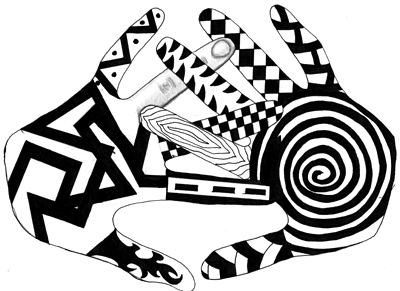All Nonfiction
- Bullying
- Books
- Academic
- Author Interviews
- Celebrity interviews
- College Articles
- College Essays
- Educator of the Year
- Heroes
- Interviews
- Memoir
- Personal Experience
- Sports
- Travel & Culture
All Opinions
- Bullying
- Current Events / Politics
- Discrimination
- Drugs / Alcohol / Smoking
- Entertainment / Celebrities
- Environment
- Love / Relationships
- Movies / Music / TV
- Pop Culture / Trends
- School / College
- Social Issues / Civics
- Spirituality / Religion
- Sports / Hobbies
All Hot Topics
- Bullying
- Community Service
- Environment
- Health
- Letters to the Editor
- Pride & Prejudice
- What Matters
- Back
Summer Guide
- Program Links
- Program Reviews
- Back
College Guide
- College Links
- College Reviews
- College Essays
- College Articles
- Back
Race: by David Mamet at the Goodman Theatre
David Mamet is celebrated, and often tried for his works exposing raw human emotion and the prejudices we have regardless of social progress. I have been waiting for a show to pose the question, “Is ignorance a convention? Are anyone’s intentions honestly pure?” “Race” is that show.
“Race” deals with a pair of lawyers, one white and one black, who take on a contentious case: is their successful, white, older male client guilty of raping a young, black female? Throughout the show, race fuels every decision and argument these lawyers -- and their black, female assistant – encounter.
As a complete work, this production shows a great attention to detail. The sound and light cues are rapid, almost abrupt, mimicking the quick changes small details can have on a case. While a bit startling, the cues helped the audience inhabit the office and ask themselves the question, “What would you do?” As the case progresses, both the actors and observers see the case through multiple viewpoints: prosecutor, defense attorney, jury and judge.
Mamet allows the audience to not only reach a final verdict at the conclusion of the play, but also make decisions at every point along the way. Each character, new detail in the case and a snappy comment from a spitfire lawyer or client delivers a new opportunity for audience reflection. Because a variety of races, social classes and sexes are represented in each argument, the conclusions made by the audience are purely individual. This element of “Race” was thrillingly refreshing, and I took it as almost a challenge: “What’s my opinion on this issue right now? Who am I siding with now? Who will I be siding with in two minutes?” Race allowed me to not only engage in the piece, but also pay equal attention to my own opinions, and how I responded to each issue presented, whether it be race, sex, class, even justice.
The cast assembled for this production is nothing short of stellar. Marc Grapey and Geoffrey Owens are harmonious in their “bad cop bad-er cop” routine, and exhibit the wit required to be a successful lawyer. Both actors smoothy underscore the importance of offering jurors “the old razzle dazzle,” a la the musical “Chicago.” This did not endear them to me. But slowly their grit and bluntness grew on me, allowing greater understanding and more enjoyment of their performances.
I also believe the wit and spice that is Tamberla Perry is something to keep an eye on. She has a full plate with this role; is Susan simply a junior associate whose actions compromise her bosses? Is she the wronged victim of racism? Is she a lying, conniving vigilante? Perry gives the audience a taste of each possibility. Every aspect of Perry’s performance is as compelling, relatable and sharply executed as possible.
Mamet is notorious for objectifying women, and “Race” is a prime example. We have three beautifully written male roles with the utmost depth, and it seems as if Mamet, along with his ‘wrap it up’ ending, completely phoned in Susan’s character. There is so much potential for development of both her character and that of the unseen Woman In The Red Dress in this piece. However, the women, as well as sexism, are rarely touched on. “Race” had the potential to send absolute shockwaves through the audience, and unfortunately, Mamet veered his closed mind toward males and race, when the aspects of women and sexism play a major part in the case.
A component audiences should be wary about is Mamet’s dialogue pace. The man loves a spitfire conversation, and the opening of “Race” is no exception. Details may slip by, but they do so with the hope of resurfacing later. It’s not a hindrance, especially with audience members who are familiar with other Mamet works such as “American Buffalo.” Newcomers to the Mamet freeway might find the speed a bit of a challenge at first. To that, audiences should say, “challenge accepted” and allow themselves to dive in to Mamet’s work head on.
“Race” engages the mind and allows the audience to sit with its opinions while constantly pushing ideas forward, backward and side-to-side. That it does so with a powerhouse cast brings strength as well as bite to the production.

Similar Articles
JOIN THE DISCUSSION
This article has 0 comments.
